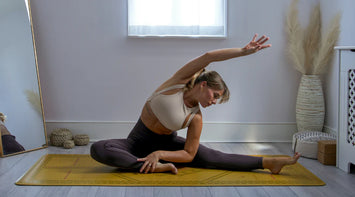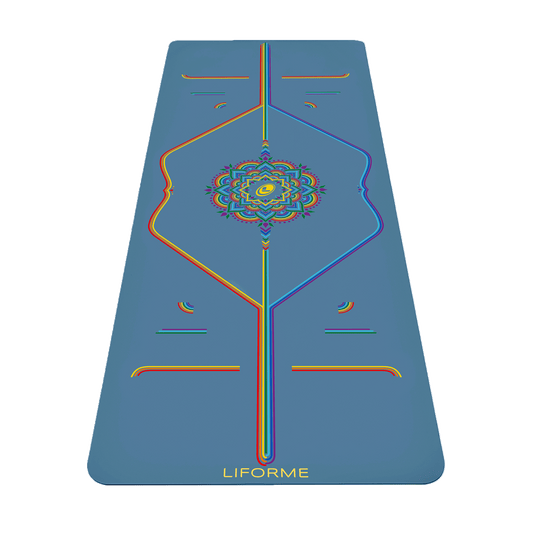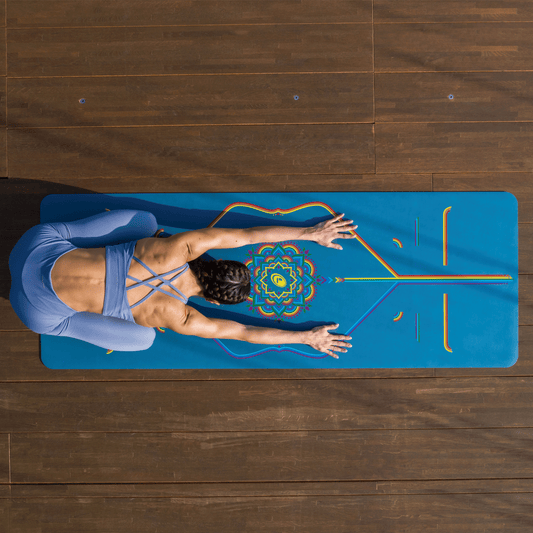For instance, there is really no better way to learn how to access your back muscles. Upward Facing Dog, which often replaces Cobra in more advanced vinyasa sequencing, is a very different type of pose. Even if you’re quite capable of flowing from Chaturanga to Upward Dog, it’s always a good idea to do a few rounds of Cobra at the beginning of a practice session to wake up your back body.
The bent-arms version of the pose described below is often called Low Cobra, while the straight-armed version is called Full Cobra. While Full Cobra offers the opportunity for a deeper backbend, Low Cobra is much more focused on strengthening, so it's our pick.
Benefits of Low Cobra Pose
Strengthens the muscles of the lower, mid, and upper back
Stretches the chest and abdomen
Works the quads and glutes
Instructions:
1. Come to lie on your stomach with your forehead on the floor and your legs extended. Bring the palms of your hands flat on the floor directly underneath your shoulders with your elbows hugging the sides of your body.
2. Though it may seem like lifting your chest off the floor is a pretty simple action, you have to lay your foundation first, anchoring specific parts of your body to your mat in preparation. (It’s a root to rise thing.)
Firm your legs from the thighs to the toes. Press the tops of your feet into the mat so much that your kneecaps lift away from the floor.
Engage your glutes and press down to anchor your pelvis to the floor. This causes your belly to draw in, an action that leads to the next step. Follow through by hugging your navel gently toward your spine and sinking your tailbone toward the floor (your lower back will thank you later!).
3. Keeping your neck in a neutral position and your gaze on the floor in front of you, on an inhalation lift your chest any amount off the floor. It’s not how high you can lift your chest but how you go about it.
4. Do not press into your hands to raise the chest higher. Use your back muscles instead. If you find yourself using your hands a lot, take them out of the equation by hovering them off the floor. Your chest will probably not come up as high but you will be moving with more integrity.
5. Knit your low ribs together to keep them from flaring and continue to move your shoulders down your back away from your ears as you hug your shoulder blades toward the midline on your back.
6. On an exhalation, lower your forehead to the mat. On your next inhalation, repeat the process described above to lift into another Cobra. Let your movements undulate on your breath like waves.
In class, you may only have time to do one Cobra before moving on. On your own, it’s nice to do three or four in a row as each successive lift seems to bring you higher. You can also experiment with holding the pose for several breaths instead of lowering on the next exhale.
Variations
A Full Cobra sounds like it should be more advanced than a Low Cobra, but, as described above, it’s actually a pretty different pose. As soon as you put weight onto your hands to lift your chest, you’re reducing the amount of work that your back muscles have to do. For back-body strength and awareness, stick with the small but mighty Low Cobra.





































